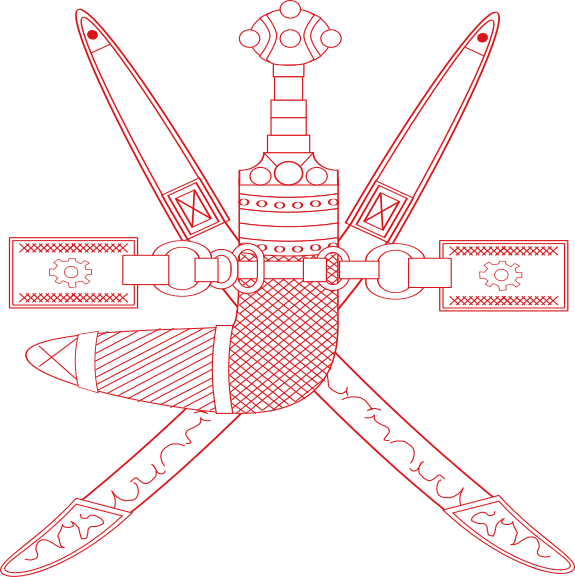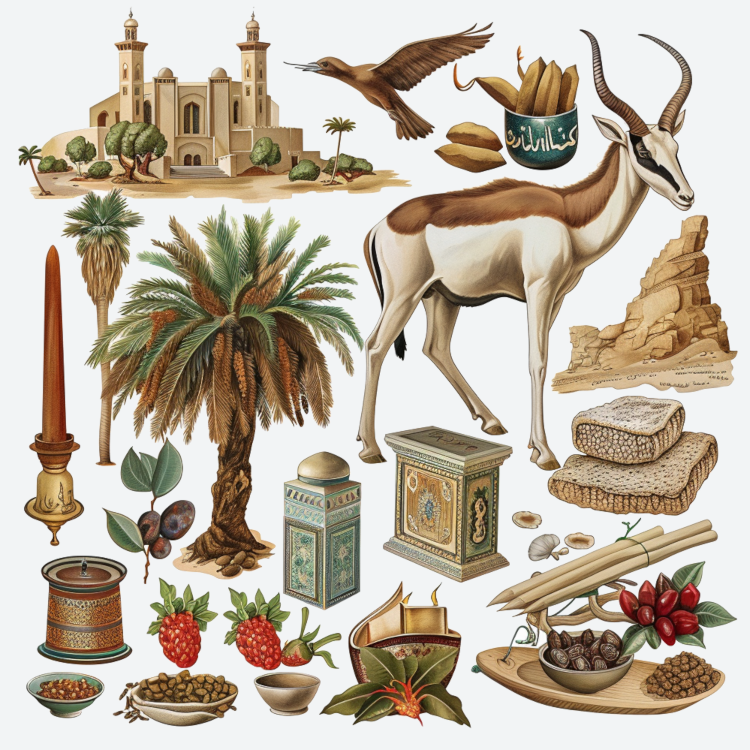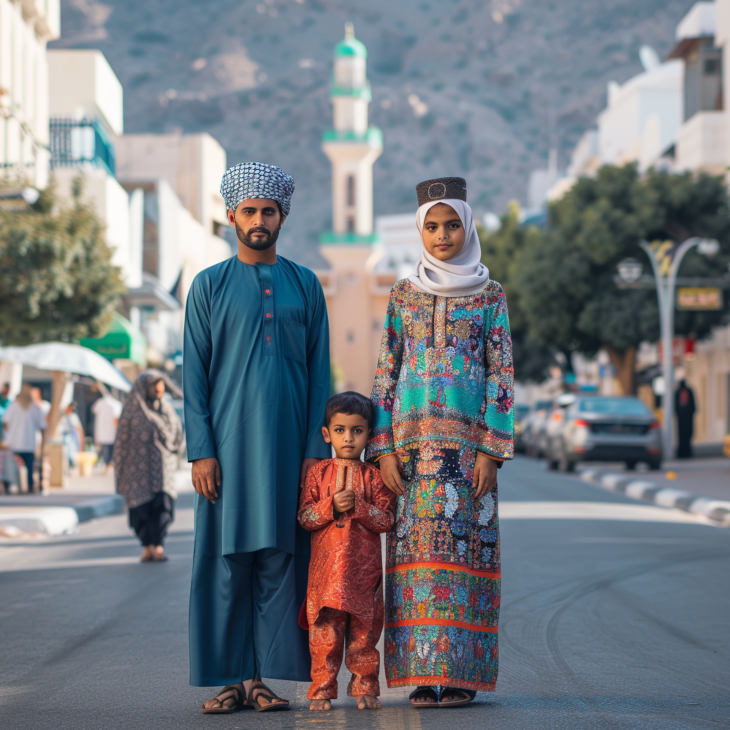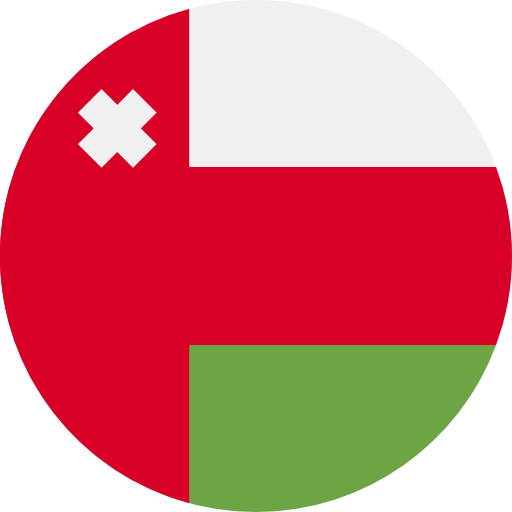About OM

Location
Oman is a country located on the southeastern coast of the Arabian Peninsula in Southwest Asia. It shares borders with the United Arab Emirates, Saudi Arabia, and Yemen, and it has a coastline along the Arabian Sea and the Gulf of Oman.
Capital
The capital city of Oman is Muscat.
Population
As of the latest estimates, Oman has a population of approximately 5 million people.
Area
Oman covers a total land area of about 309,500 square kilometers (119,500 square miles).
Official Language
The official language of Oman is Arabic.
Government
Oman is an absolute monarchy with Sultan Haitham bin Tariq Al Said as the current ruler. The Sultan holds absolute power over the government and state institutions. The country has a Council of Ministers appointed by the Sultan to assist in the administration of the government.
Independence
Oman has a long history dating back to ancient times, but it formally gained independence from the United Kingdom on November 18, 1650.
Currency
The currency of Oman is the Omani Rial (OMR).
Economy
Oman has a diverse economy based on oil and gas production, which accounts for a significant portion of the country's GDP and government revenue. The government has been working to diversify the economy by investing in sectors such as tourism, manufacturing, and logistics. Oman is also known for its traditional industries, including fishing, agriculture, and handicrafts.
Natural Resources
Oman is rich in natural resources, particularly oil and natural gas. The country also has significant mineral reserves, including copper, gold, and limestone. Oman's coastal areas are known for their rich marine life and fishing opportunities.
Culture
Omani culture is deeply rooted in Islamic traditions and values, with influences from Arab, Persian, and East African cultures. Traditional Omani dress for men includes the dishdasha (long robe) and the kumma (cap), while women often wear the abaya (long cloak) and hijab (headscarf). Omani cuisine features dishes such as biryani, grilled meats, and seafood.
Religion
Islam is the official religion of Oman, and the majority of Omanis are Muslims, predominantly adhering to the Ibadi sect, which is distinct from Sunni and Shia Islam. Religious tolerance is practiced in Oman, and there are small communities of Christians, Hindus, and other religious groups.
Tourism
Oman is known for its stunning natural landscapes, including deserts, mountains, and coastlines. Tourist attractions include the historic city of Muscat, the ancient forts of Nizwa and Bahla, the Wahiba Sands desert, and the picturesque beaches of Salalah.
Infrastructure
Oman has been investing in infrastructure development, including transportation, education, and healthcare, to support economic growth and improve living standards for its citizens.
International Relations
Oman maintains diplomatic relations with countries around the world and plays a role in regional affairs. It is a member of various international organizations, including the United Nations, the Gulf Cooperation Council (GCC), and the Arab League.

National Items of Oman
Arabian Oryx
The Arabian Oryx (Oryx leucoryx) is the national animal of Oman. Known for its striking appearance and adaptability to desert environments, it symbolizes strength, resilience, and the natural heritage of Oman.
Frankincense Tree
The Frankincense tree (Boswellia sacra) is a significant symbol in Oman. It represents the country's historical trade and cultural heritage, particularly in the Dhofar region where frankincense has been harvested for centuries.
Dhow
The Dhow is a traditional sailing vessel used in Omani waters. It symbolizes the maritime heritage, craftsmanship, and the seafaring traditions of Oman.
Omani Khanjar
The Omani Khanjar is a traditional curved dagger. It symbolizes national pride, heritage, and is an important part of Omani traditional attire, often worn during special occasions.
Rose (Rosa damascena)
The Damask Rose (Rosa damascena) is significant in Omani culture, particularly in the Jebel Akhdar region where rose water is produced. It represents beauty, fragrance, and the agricultural heritage of Oman.
Sultan Qaboos Grand Mosque
The Sultan Qaboos Grand Mosque in Muscat is a symbol of Oman's religious and architectural heritage. It represents the country's modern achievements and its Islamic faith.
Dates
Dates are a staple food in Oman and are integral to its agriculture and diet. They symbolize hospitality, abundance, and the agricultural traditions of Oman.
Omani Halwa
Omani Halwa is a traditional sweet made from sugar, rose water, and various spices. It represents the rich culinary heritage and cultural hospitality of Oman.
Shawl (Mussar)
The Mussar is a traditional Omani shawl worn by men. It symbolizes cultural heritage, traditional attire, and is often intricately designed.
Falcon
The Falcon is an important symbol in Omani culture. Falconry is a traditional sport, and the bird represents power, grace, and the country's rich natural heritage.
Jebel Shams
Jebel Shams, the highest mountain in Oman, is a natural landmark symbolizing the country's stunning landscapes, adventure opportunities, and natural beauty.
Wadi
Wadis, or dry riverbeds that fill with water during rains, are significant geographical features in Oman. They symbolize the natural beauty and the unique environmental characteristics of the country.
Incense Burner
The incense burner, often associated with frankincense, symbolizes Oman's historical trade, cultural practices, and the significance of frankincense in Omani traditions.
Bait Al Zubair
Bait Al Zubair is a museum in Muscat that showcases Omani heritage and culture. It represents the country's commitment to preserving and showcasing its rich history and cultural artifacts.

This anthem reflects Oman's commitment to peace, loyalty to its Sultan, and aspirations for prosperity and unity. It celebrates the nation's achievements and its vision for the future under the leadership of the Sultan.
The national anthem of Oman is called "Nashid as-Salaam as-Sultani" in Arabic, which translates to "The Sultan's Anthem of Peace" in English. Here are the lyrics in Arabic along with an English translation:
نشيد السلام السلطاني
بهون الخفاجي، إبراهيم السلطان
ألحان: ڤرتس أولجاي
١.
سلطاننا زمانه شهيد للسلام
والسلام لشعبنا رمز الوفاء
والوطن بترابه يحميه كرام
ما جمع الله عباده علينا رضى واهل ودلاّ
٢.
سلطاننا كفء بين الشعوب بالسند
فاستقرارنا عنوان العلياء
واستقامتنا ترتكز على وجهك الهند
وتحيا وتنصر وطنك لنا إلى يوم الدين
٣.
وتعيش السلطنة فخرا وسندا بالمجد
وتنمو في الإزدهار بالوحدة والاتحاد
والأمجاد والمجد حافظة ووصية ترعى بالجهد
حتى تحكم حرة سلطاننا لمجده والسلام والعدل والإنسان
٤.
لسلطاننا العزيز حفظه الله في عهد الولاء
سلام عليه ورعاه، أسكنه الله فردوس الخلود
رمزاً لنا في الأمجاد، فتحاوه السلام
رمز السلام، رمز السلام، له المجد والعلياء
The Sultan's Anthem of Peace
By Hoon Al-Khufaji, Ibrahim Al-Saltani
Melody by Bertshe Uljay
1.
Our Sultan is a witness to peace throughout time
And peace for our people is a symbol of loyalty
Our land, with its soil, is protected by honorable men
God has gathered his servants to us, content, family, and guests
2.
Our Sultan is competent among nations with support
For our stability is the epitome of exaltation
And our righteousness is supported by your noble face
May your country live and triumph for us until Judgment Day
3.
May the Sultanate live as a source of pride and support in glory
And thrive in prosperity with unity and union
Glory and honor, protector and legacy nurtured by effort
Until our Sultan governs freely for his glory, peace, justice, and humanity
4.
For our beloved Sultan, may God protect him in the covenant of allegiance
Peace be upon him and his guardianship, may God grant him eternal paradise
A symbol for us in glory, peace in its endeavor
A symbol of peace, a symbol of peace, to him, belongs the glory and exaltation


